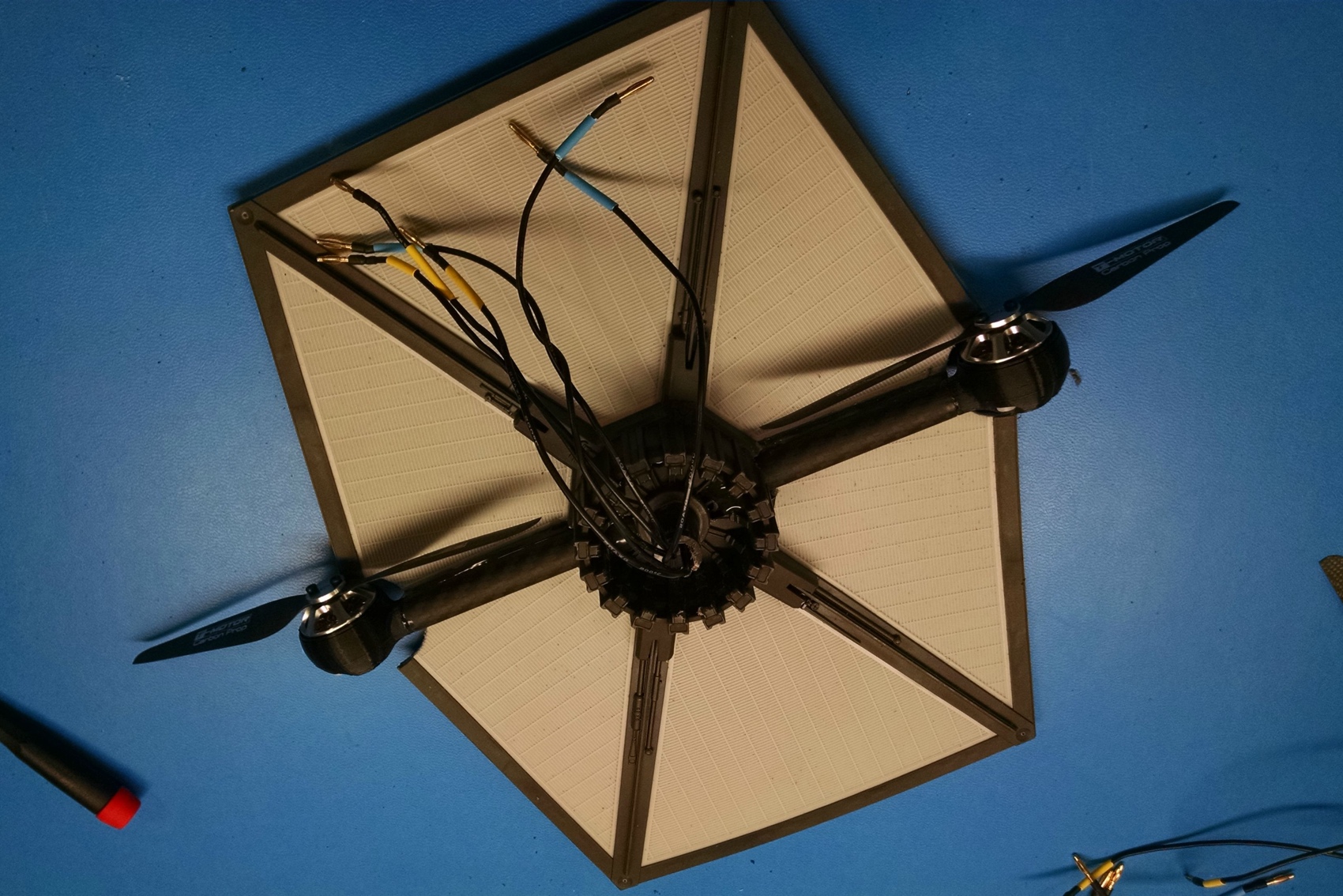As created by Imgur user woodpiece, the base of the spacecraft is a $169 Star Wars The Black Series First Order Special Forces TIE Fighter. The 6-inch scale model of the starfighter with working cockpit is sold by Hasbro and is designed for kids and kids at heart. The replica is an accurate representation of the Tie Fighters from the movies, but it lacks electronics and is a basic model that adults can put on display or kids can run around with while they pretend to fly like Darth Vader.
Building a flying version of the Tie Fighter was a surprisingly simple job that took advantage of the open cockpit and roomy interior of the larger-sized replica. The first step was the installation of the 250 quad motors and its rotors, which were installed at the front and the back of each Tie Fighter wing. This step required both the removal of the Tie Fighter wings and their wing brackets, which were Dremeled to make room for the long motor sticks that connect the front rotor to the rear rotor. The drone motors were installed using 3D printed mounts, and the wiring was run inside the body and frame of the toy, making for a very clean-looking overhaul. Each wing also was notched to allow the rotors to spin freely.
All four rotors were installed in the same square arrangement as a standard quadcopter, making it easy to control the flight of the Tie Fighter model. The flight controller for the drone, a third-party Flip multiwii 1.5, was installed inside the base of the Tie Fighter cockpit, which opens for easy access. Also placed inside the cockpit body were the motor controllers and the drone’s 1000mAh battery. All the components fit comfortably inside the Tie Fighter Model with no additional modifications other than the initial Dremel holes for the motor sticks. The only thing missing from this fantastic mod is a video of the Tie Fighter’s maiden flight — we can only hope the first flight was as good as we imagine it to be.



